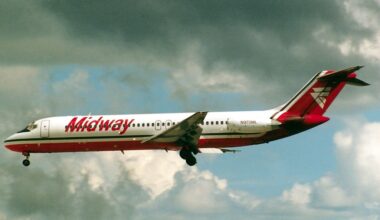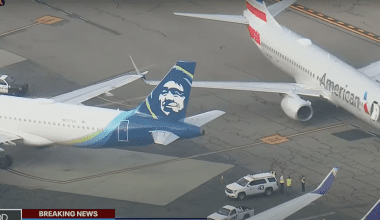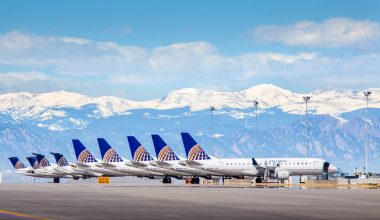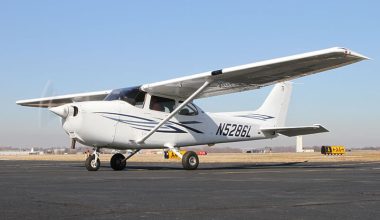Airplanes are boon to science and technology. The first-ever flight dated back to 1903 changed the pattern of traveling ever. Although aviation and aircraft follow physics and mathematical backgrounds behind flight, passengers and pilots are humans after all.
Humans have not been able to get out of many senses, albeit the emergence of scientific developments at a frenetic pace. Plenty of unfortunate accidents have occurred to make people fear flying.
The numerical superstition regarding ’13’ has several speculations from mathematical to religious pursuit. Number 13 is taken to be a bad omen by several people, including pilots. So, airlines or aircraft manufacturers don’t mess with people’s beliefs and tend to omit row 13 from the airplane. It’s simply easier for them to skip row 13 when numbering off their rows rather than trying to forge positivity in them that numbers don’t matter.

Many travelers might have noticed the omission of row 13 on the plane they are traveling. Some airplanes escaping row 13 can be attributed to triskaidekaphobia which is the fear of number 13. The row continues as 12, 14, and so on. One may argue that if row 13 is unsafe, others may not be as well. But people holding the superstitious belief might not be convinced or comfortable upon being allocated a seat on that row. So, omitting row 13 may make such passengers a bit secure.
Airlines do follow good and bad mojo, fateful traditions such as skipping row 13 on a plane or discarding flight numbers of crashed jets, etc. No airlines schedule their flight as flight 13.
Stress of flying
Flying brings out superstition among passengers, which may be due to the feeling of complete lack of control once they start hurtling down the runway. As soon as people strap into the airplane seats and get ready to leave the ground, they have little control over their fate for the next few hours of their flight. Statistics and historical data are proof that flying is safer than driving. Still, many travelers feel notorious discomfort and fear while aircraft defies gravity and takes to the skies. Some fear soaring at cruising altitude; others feel uncomfortable while landing or taking off or simply fear plane crashes due to mechanical fear.

The increased stress of travel requires an increased comfort mechanism. One way passengers try to cope with their anxiety towards flying is to believe in superstitions to control what may or may not happen to them while flying. Passengers holding negative perceptions regarding row 13 may display alarming behavior when assigned to that row. So, for airlines and flight attendants, the omission of row 13 on aircraft is not just a superstition rather a pleasurable tradition. Aircraft manufacturers and commercial airlines skip number 13 to comfort passengers of their safety and avoid making superstitious people nervous.
Many people have incorporated the idea of considering certain numbers unlucky without being fully aware of the reasons and hold a similar lasting impression far into the future. The airline business has to conform to it constantly. Whatever events surround number 13, passengers, pilots, or even airlines take it seriously and skip number 13 entirely while numbering gates or rows.
Aircraft accidents associated with no. 13
Southwest Airlines Flight 1380 was involved in an engine failure incident on April 17, 2018, leading to rapid depressurization. The aircraft suffered substantial damage, and one of the passengers who was partially ejected out of the window later died due to injuries.
Continental Airlines Flight 1713, scheduled to depart Denver, caught a fuel-fed flash fire in the left-wing of the aircraft compressing and crushing passengers on board and led to the death of 25 passengers and three crew members. The accident occurred in 1987, and triskaidekaphobia followed, as airline veterans say.
Some of the famous airlines that don’t have row 13 on their airplanes
Air France, Iberia, Ryanair, Lufthansa, etc., don’t have row 13 on their airplanes. Gulf carriers such as Qatar Airways and Emirates Airlines have also dropped row 13. Airlines have to handle a lot of international passengers. So, they must respect their sentiments and consider as many specific cultural beliefs as possible.
Unlucky numbers alongside 13
Some numbers 14 and 17 are also said to be unlucky in some cultures that airplanes avoid as well. Number 17, which stands for XVII in Roman, can be a euphemism for ‘I am dead’ if rearranged in an anagram form. Polaris aircraft misses out row 13 or 14 because 14 sounds like ‘will die’ in Mandarin-speaking regions in China. Number 13 has a number of negative connotations, or else avoidance wouldn’t be American manufacturing, as told by Ryanair.
However, many airlines and airports stand on their ground that avoiding number 13 on aircraft’s row or boarding gate is not the consequence of superstitious beliefs; rather, it’s to rearrange the gates and rows and have uniform seat numbers across varieties of aircraft. Few airlines omit several rows for seat number consistency across aircraft configurations. United Airlines arranged seats without having an aversion to row 13. Boeing 737 and variants of 757 also skip row 13 to standardize the row numbering.
Major American airlines such as American, Delta, Southwest, and JetBlue haven’t snubbed 13th row from their fleet of aircraft despite the resounding bad luck belief in the western culture.
Superstitions about numbers exist commonly. Some particular numbers such as 8 and 7 are said to be lucky in China and the USA, respectively. If we turn the pages on past events related to number 13, Motorsports avoided number 13 for the sake of avoiding bad luck. Number 13 was skipped on years between 1915 and 2022 in Indianapolis 500.
Airlines omitting other numbers
Lufthansa Airlines omits seat numbers 13 and 17 on its aircraft considering the separate cultures of traveling passengers. Italy and Brazil aren’t very fond of numbers 17 and 13. So, to ensure pleasant flights to Italian and Brazilian passengers, the airline has two missing seat numbers. The airline respects the superstitious rituals of international passengers it caters to and provides them with little peace of mind.
Cathay Pacific, Hong Kong Airlines, Singapore Airlines, and some Asian airlines don’t seem to enjoy equipping row 4 due to the fact the word ‘four’ sounds like death.
Airplanes that do have seats with number 13
A320, a narrowbody aircraft, has comfortable and one of the best seats on the 13th row as it offers extra legroom. Located in the front of the exit row, the seats of the 13th row are extra-revenue generators for airlines, as they claim relatively larger legroom.

Reasons behind missing row numbers on aircraft except for superstition
Airlines operate different types of aircraft having different seating capacities in their fleet. The number of rows differs according to aircraft variant. For example, A320 has nearly 30 rows while A330 owns 60 rows. So, to maintain uniform seat numbering and type of seat, airlines have missing row numbers, which may include number 13 also.
Airlines skip certain numbers that are considered unlucky in their local beliefs. Some jets are reconfigured to add or remove economy or premium seats. So certain numbers may miss right before 20. The lettering and numbering are attributed to the maximum availability of seating configuration.
Airlines choose to get rid of row numbers.
It’s hardly any sacrifice for airlines to get rid of the number 13 when numbering off their rows. They can jump straight from 12 to 14 or even skip 14 in some cases due to the stigma around the luckless numbers. By omitting several numbers such as 13 or 17 in aircraft, they serve the passenger by keeping them away from the strain of bad luck and reducing passenger anxiety.
Airlines consider which unlucky number to drop based upon their common destinations that consider certain number unlucky and the frequent flyers.
Events related as to why 13 is unlucky
Norse mythologies, Friday 13th, are all explanations related to the belief that 13 is an unlucky number. Travel superstitions aren’t just set apart for airlines. Hotels, office buildings around the world bypass the 13th floor due to triskaidekaphobia. The poll carried by Gallup in 2007 unveiled the fact that 13% of Americans are anxious to stay in a room on the 13th floor.
Wrapping things up
Passengers have their own prejudices and superstitions they wrap to alter the way they travel. Some airlines believe to be likely to lose some of their revenues over the number 13 seat assignment. On the one hand, dropping unlucky numbers help to maintain the customer base by not spoiling their perception of unluckiness, and on the other hand, it helps airline’s effort to grow out their workforce even more.
So, the airlines skip seat 13 rows to respect the cultural beliefs of passengers, make them cozy or reconfigure the seating numbers. There’s no negative side effect or economic hurdle for the airline from a business perspective.
Next time you notice the rows skipping several numbers, you’ll know it’s not the airline’s mistake but rather done on purpose.






